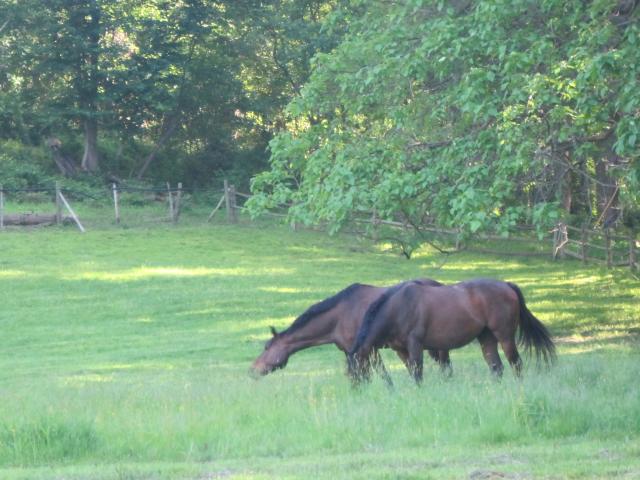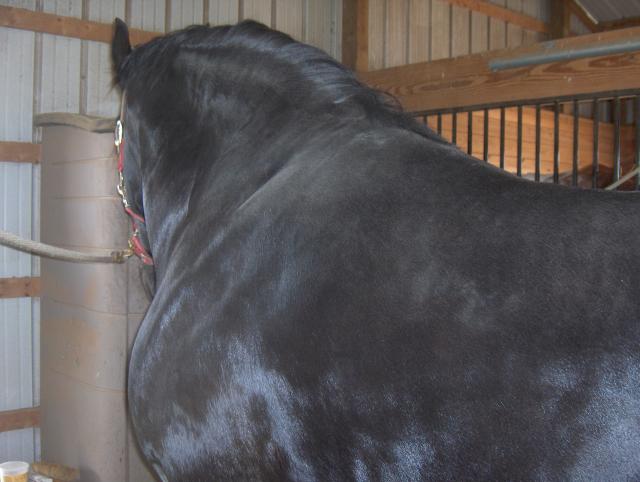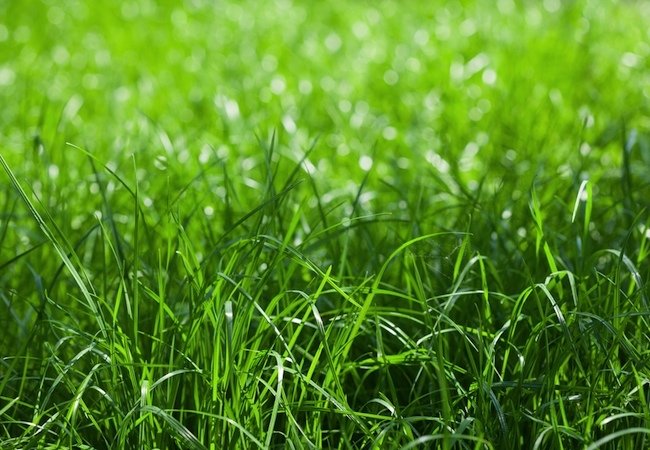This post by Dawn Willoughby was originally posted on our blog on June 2, 2011. It’s that time of year when many of us are seeing spring grass flourish, making it a great time to remember the challenges that grass adds to the care of our horses.
In most cases, owners can prevent the ravages of laminitis (inflammation of the laminae between hoof wall and coffin bone) and founder (pulling away of wall from coffin bone due to a broken laminae). During my six years as a professional trimmer, I tried to educate owners about preventing this painful situation. Here is a review of what I shared with them every spring.
I live in Delaware where we have a spring that challenges most horses. Beginning in late March, early April, our sugary spring grass starts to grow. Our worst days are cool and sunny. This combination creates a surge of sugar in the grass. When the sun goes down, the spring night temperatures are cool, keeping the sugar in the grass instead of returning to the roots. That’s a double whammy for the natural herd that is out on grass 24/7. It isn’t until July that we reliably dry out and warm up every day and night. When this happens, the sugar returns to the roots. I learned about forage growth and pasture management from studying materials and attending clinics by Katy Watts, www.safergrass.com, an agricultural expert and owner of founder-prone horses. She offers wonderful lectures on her site as well.

When I had a trimming practice, I encouraged owners to mark April 1st to July 1st on their calendars and prepare for spring grass for their easy keepers.
- First and foremost, adjust the diet. Lower dietary sugar any way that you can. You will need to be especially aggressive if you have a horse prone to laminitis and founder, usually known as an “easy keeper”. Eliminate grain, molasses, most treats, and if necessary, turn your horse out in a dirt pasture or add a muzzle before turning your horse out on grass. Hay should have 10% or less sugar. Correctly soaking hay can reduce sugar by 30%. Most horses do very well on forage diets.
- Maintain or increase exercise.
- A distant third, the trim. Apply a steeper bevel to outer and inner wall in order to avoid any wall pressure on the laminae of a normally well-trimmed horse. In other words, apply the “rehab” trim. (more info below)
- Involve the vet as needed.
In the spring, the grass is nourishing seeds in order to survive. Even if you have an over-grazed area, you can assume it’s high in sugar if there is grass. Stressed grass is high in sugar. I use Equi Analytical Laboratories to test hay and pasture. The test costs $26. Then I know the exact sugar content as well as the amount and proportion of minerals in my horse’s diet. I have learned to supplement my horse’s meals by balancing the minerals in his diet. Dr. Eleanor Kellon, www.drkellon.com, will help you create a plan for your horse, or you can take her basic course online and learn to balance the diet yourself. Dr. Kellon is an expert in this area.
As for the trim, I put a steeper angle (55 degrees) on the walls and switch from a “maintenance” trim to a “rehabilitation” trim in April, on all horses, founder-prone or not. That means I apply the mustang roll to the outer and inner wall, right to the laminae. I return to the maintenance trim in July when the sugar reliably declines, just beveling the outer wall. By relieving any pressure on the laminae (aka white line) via the wall, I am able to minimize wall flare due to laminitis. I have noticed that in May, my OTTB, Sunny, becomes a bit ouchy on the gravel driveway so clearly he has lamintis. There are other telltale symptoms. He may lose a little bit of concavity, about a half inch from the laminae. If he experiences any wall flare, it is limited to about an inch from the ground. In our 6 years together, he has never gone lame. Another telltale sign is one or more horizontal rings on the outer wall, laminitic rings where the laminae detached, and reattached. When I ride out in rocky areas, I simply boot the front hooves. Padded Epics, Gloves, and Old Mac’s G2 all do a nice job.
Example 1
Tessa is an eight-year-old, Warmblood mare. She has been barefoot her entire life and has had what I consider a good trim for the past 4 years. Her owner trims her every week or two. She is turned out with a babysitter, Frisco the Mini, on 3 acres that wrap around the house. Their diet is mostly low-sugar hay. The pair moves a lot, checking on their people. This year Tessa’s owner reduced her grain from a couple quarts to a handful. This is the first spring Tessa has not needed boots for cross country rides. I have seen her walk over rocky paths with no problem, just as she does the rest of the year. Tessa maintained full concavity on the bottom of her feet. Her weight has gone down to a healthier level, too, where you can feel but not see her ribs. Before hand she looked like a “typical” chunky Warmblood. She is ridden daily.

Example 2
Martha learned to trim her two Percheron crosses a few years ago. This is the first spring at her own farm where she can finally control their environment. The horses are on a pasture with no grass. They eat nothing with grain or molasses and have low-sugar hay strewn about the pasture. They are ridden most days. Here is the note I received from Martha this past April, 2011:
In that we are trying to save the pasture and have them on only a third of it (with no grass, just hay), we are also doing the boys a huge favor…they have absolutely NO laminitic rings, NO sore feet, NO hardish neck on Squire, etc. wow, all those times you said to keep them OFF the grass in spring and fall and other high-sugar times, this really proves that point. Tell all those sorts of non-believers who think their laminitic-prone horses who are eating little bits of “stressed” grass, aren’t getting enough to matter, that they are DEAD wrong and can get in touch with me it they want proof!!! Bravo Dawn!!!

Example 3
Early in my career, I worked on a chronically foundered Friesian who lived on a pasture with short, sad-looking vegetation (I hesitate to call it grass), growing in sandy soil. I couldn’t believe it could make any horse sick, but I was wrong. The only solution for a sensitive horse like that is to get him off the grass and feed the correct amount, by weight, of low sugar hay. (Dr. Kellon can help you with the amount of hay.) Although his owner didn’t agree, I still believe the horse had been chronically foundered for most of his life. This explained his reluctance to work under saddle at the trot or canter. When I saw him, it was the first time he had gone lame. But I am sure he didn’t “suddenly” get sore; he simply couldn’t hide it anymore. His body had the telltale fat pad pattern of a lamintic horse: convex, filled in area above the eyes, cresty neck, and fat pads on his shoulders and on either side of the tail.


It’s easy to tell on most horses if the wall is well connected to the coffin bone. Just put your fingers on the hairline of the coronary band and run them down the wall. Begin on one side and work your way around the entire foot. If you feel a flare, the wall isn’t connected. This has been the case with almost every horse I have worked on. By correcting the diet, exercise and trim, I routinely grew out well-connected feet. The only exception is a horse that has been chronically foundered and the laminae became scarred. There is nothing for the wall to attach to. Typically the wall is well-connected for about half the foot and then flares out, even after a year of good care. Some horses do flare right out of the hairline but as you apply the correct trim, you will see the well-connected foot at the top of the hoof capsule.


On sensitive, easy-keepers, owners must go into overdrive in the spring and any time the weather is sunny in the day and cool at night, with adequate rain to grow grass. For some horses, I suspect Cushing’s Disease if they present with founder in the fall. The vet can test for this disease; long body hair is a late-stage symptom.
There is a misconception that once the horse has “rotated”, he can’t go sound. This is untrue. In the vastly over-simplified version, the wall disconnects from the coffin bone when the laminae breaks due to a sugar overdose. If anything “rotates,” it’s the wall away from the horse. The coffin bone is right where it should be, under the horse. According to Dr. Tomas Teskey, many horses feel better within days of a dietary correction. On most horses you can grow out a good foot in 7-12 months depending on how bad the situation is. Dead lame horses may recover more slowly. Please check Pete Ramey’s site, www.hoofrehab.com, for many useful articles written by this well known “founder junkie”. His DVD series, Under the Horse, www.hoofrehab.com/underthehorse.htm, is excellent. Within that series are a couple of DVDs focusing on laminitis and founder. Shoes and stalling are never a good idea in my view.
I hope this introductory article is just the beginning of your research into learning all you can about preventing laminitis and founder for your best friend.
Good Luck and Happy Trails!
Dawn
My Favorite Resources
- Equi Analytical Laboratories http://www.equi-analytical.com. The sister laboratory, Dairy One, has additional educational information.
- Dr. Eleanor Kellon’s www.drkellon.com offers reasonably priced consults and great on-line courses. The first course to take is “National Research Foundation (NRC) Plus”. The NRC 2007 recommendations books is available on-line.
- Dr. Kellon and colleagues maintain an excellent Yahoo group site. In “Files” they have complete handouts to get you started. http://pets.groups.yahoo.com/group/EquineCushings/
- Pete Ramey’s www.hoofrehab.com has articles, DVD’s and current research.
- Katy Watt’s http://www.safergrass.org/ offers consults, articles and excellent Power Point lectures on CDs and clinic schedule.





